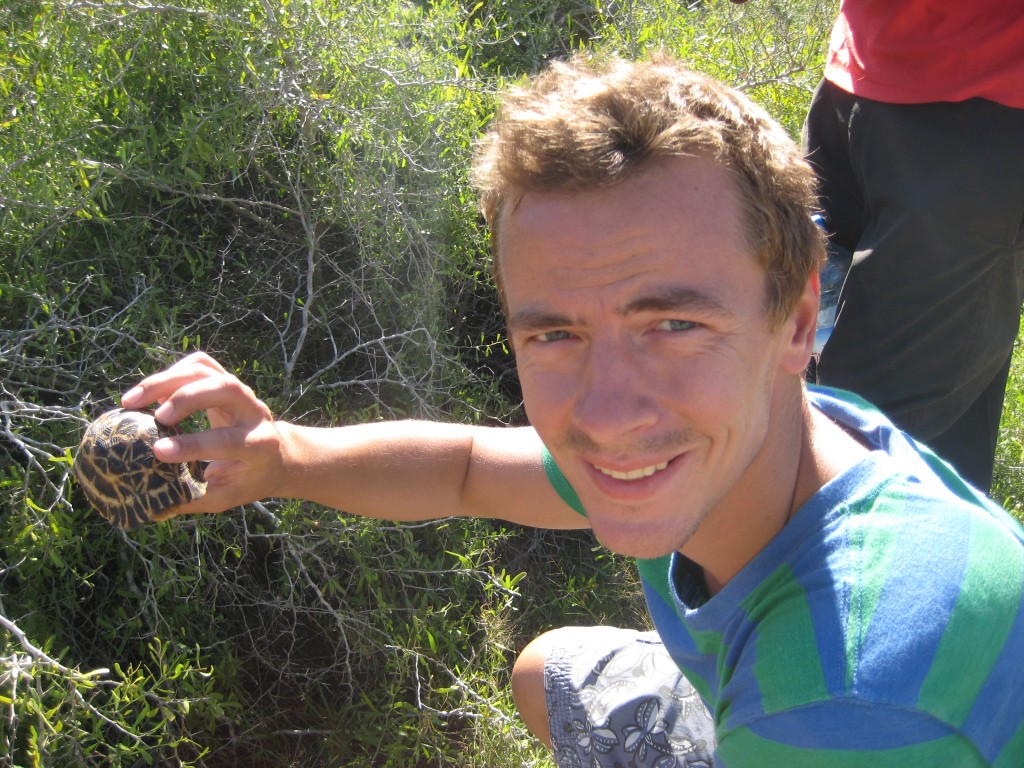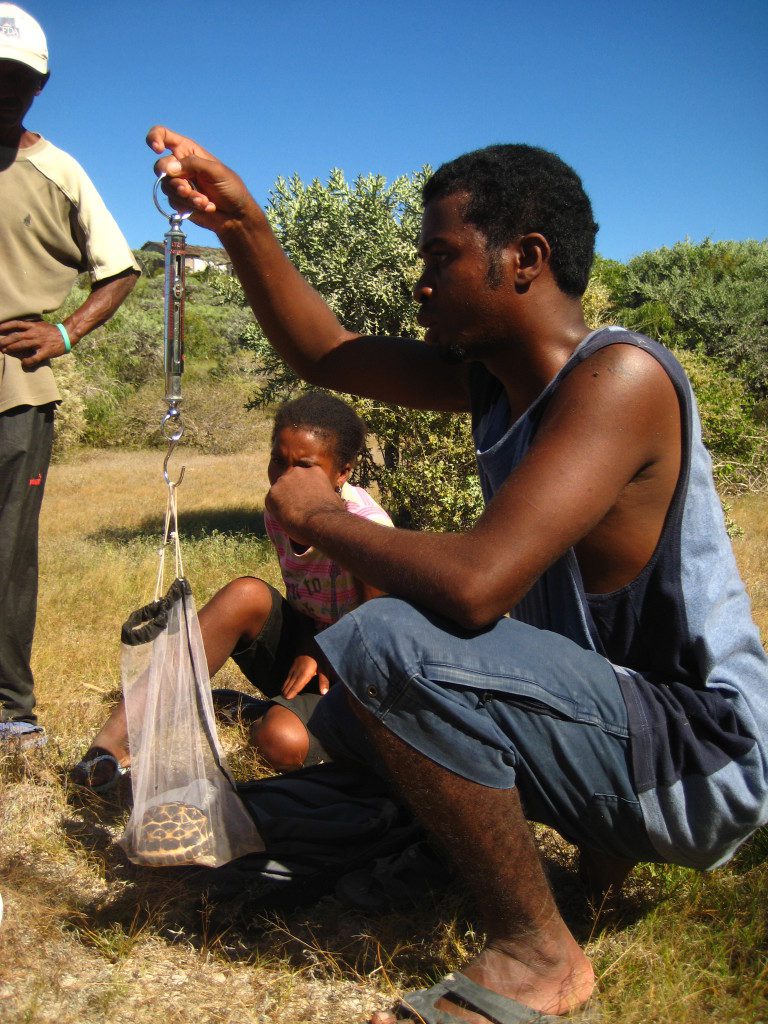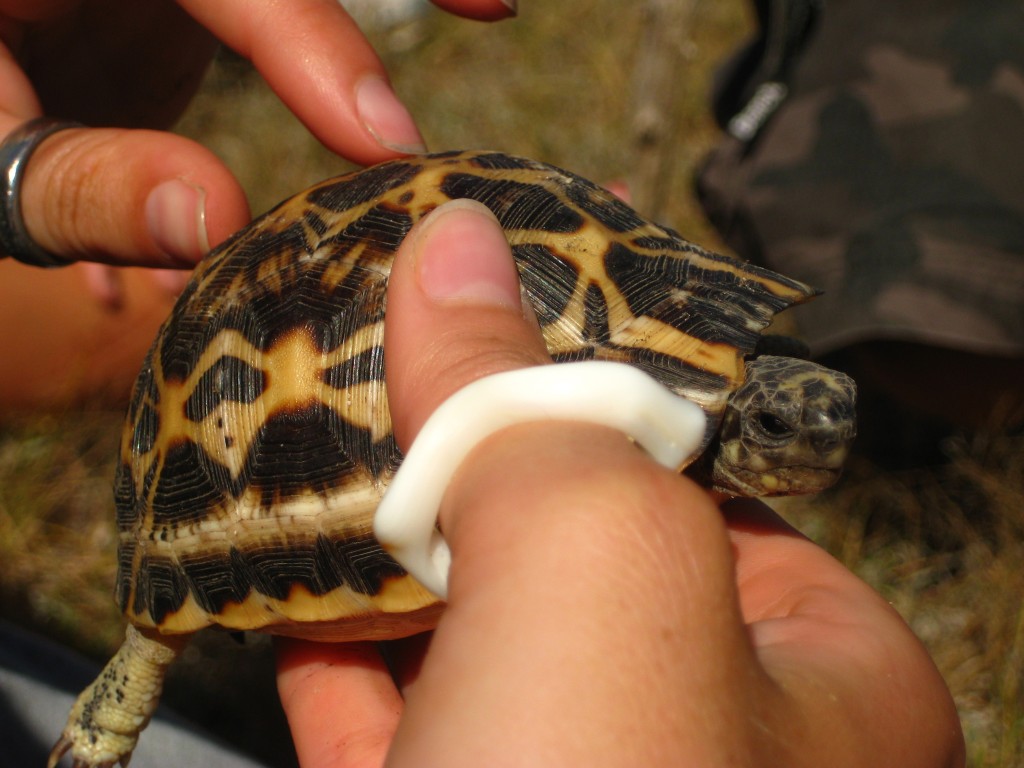by Rado Lebely, Terrestrial & Fisheries Scientist, Madagascar
After six very long months of tortoise hibernation, the Blue Ventures tortoise monitoring team was more than ready to see how abundant the spider tortoises (Pyxis arachnoides) are in the rainy season. We set out to gather more scientific data on the tortoise population in southwest Madagascar with 16 excited volunteers and four community members – all trained in the correct monitoring methodology. On this trip we were particularly lucky to be joined by four herpetology students from Madagascar’s capital Antananarivo, plus a tortoise specialist from the USA, Andrea. We were all are excited to try and find as many tortoises as possible.
Results from surveys in 2011 and 2012 allowed us to estimate which dates would be the period for the tortoises coming out of hibernation. This meant that we could accurately plan our surveying trip to Lamboara, where there is a known population of spider tortoises, in order to find as many of the species as possible. For the youngest volunteer, it was a new (scientific) experience, in a real habitat with real animals. We showed all members of our research gang how to use the materials, such as callipers and a balance, and demonstrated how to determine tortoise age and sex. While we collected data on this basic information, Andrea’s team focused on taking more complex samples for a future study on stresses and disease.
This particular monitoring expedition was very special not only because of the presence of Andrea but also because there were some new findings; five dead Tortoises were found – two with intact carapaces and three with broken carapaces. This raised several new questions. What caused this? Were the deaths due to disease? Were the shells broken post mortem? Are there other, new threats that we don’t know about? We hope the results of Andrea’s study will tell us more about these tortoises.
The good news is apart from the five areas we usually survey, we also made an exploratory trip outside of these protected areas on the island. In total for both areas, main land and island, we found 63 tortoises, compared to 51 for the last expedition. The community members told us they know of two more populations in the region that we haven’t monitored yet.
The tortoise monitoring team owes a very big thank you to the volunteers who helped us so much. We also won’t forget the work done by Andrea’s team. Studies like that need to be conducted as often as possible in the region to improve the ability of the population to stay healthy. The most important thank you of all is to local community and the hospitality that is always offered to us. All of these people make conservation of Madagascar’s tortoises possible.
Next up: a tortoise festival in April!




